“We have our own land, our own language, and our organizations and laws. We meet the criteria of a nation. Why are we not in that room?” – Chief Bill Erasmus (Dene Nation) at COP21 in Paris, France
Bradley Santelli
In the fall of 2021, the long-awaited UN Climate Change Conference of 2021, or COP26, went ahead in Glasgow, Scotland. The world got together to discuss how to combat climate change while also facing another challenge, that of hosting a large, in-person summit in the midst of a pandemic. Amongst the achievements—and, as some might point out, lack thereof—made over the course of the two-week meeting, Indigenous peoples were one of the key actors highlighted in the fight to protect the plant. As only 5% of the global population, Indigenous peoples protect territory that holds 80% of the world’s biodiversity. And in Latin America, territory governed by Indigenous groups were able to reduce deforestation “twice as much as protected areas with similar ecological conditions and accessibility,” making them key figures in understanding how the global community can better protect the environment. Alongside Indigenous climate activist like Hindou Oumarou Ibrahim’s (Mbororo), shown below, Indigenous peoples from around the globe attended COP26 to share their concerns, accounts and ideas through speeches, discussions, panels and demonstrations.
Even though the conference held under the UN Framework Convention on Climate Change (UNFCCC), the challenges that Indigenous peoples faced at COP26 can be seen in other organs of the UN Indigenous Rights regime. In this blog, I hope to explore some of these challenges exemplified with what happened in Glasgow, how it reflects on the larger international Indigenous rights regime and what some of the different UN mechanisms involved in promoting and protecting Indigenous rights can focus on in the future.
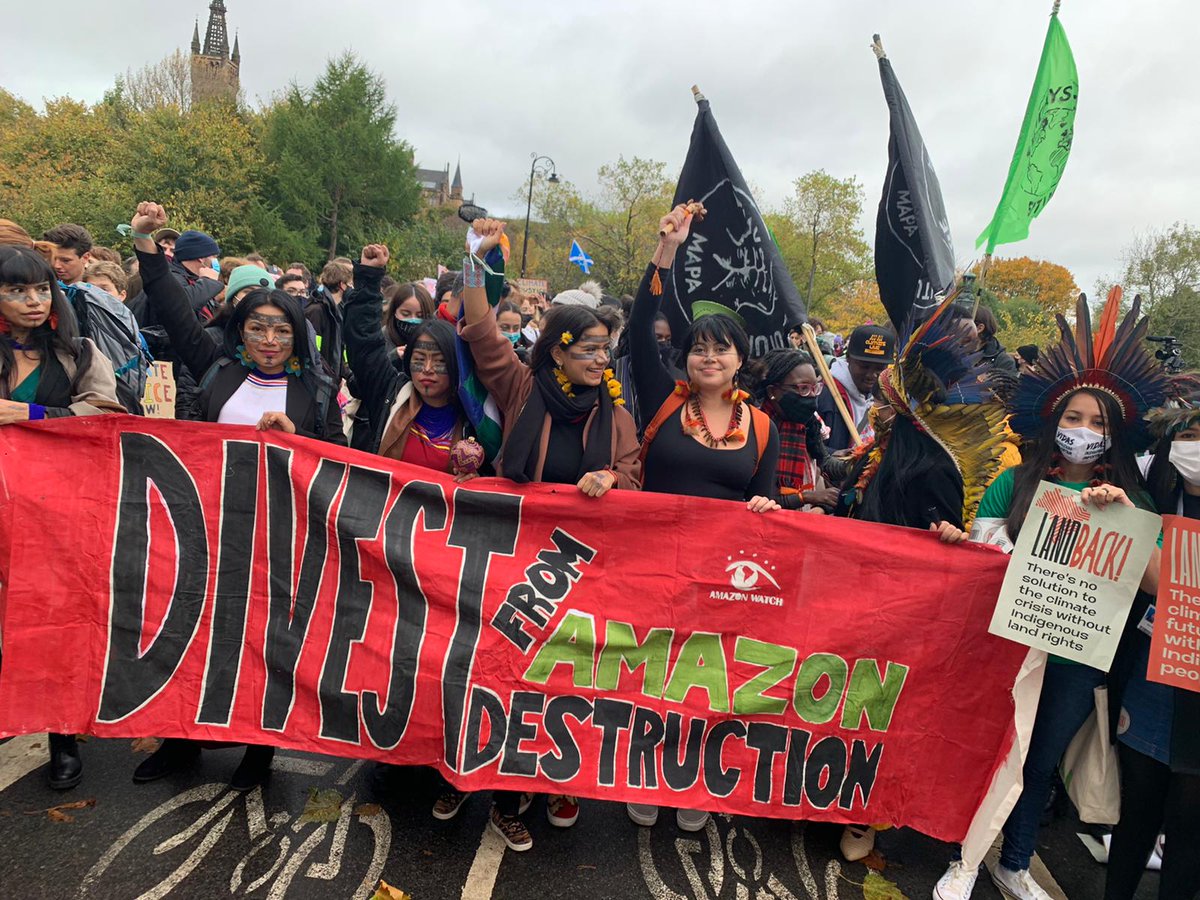
Positive engagement with Indigenous peoples at COP26
Despite the criticism COP26 has received for accessibility and equality, it should not go to say that the conference was a complete setback for Indigenous peoples and/or the climate emergency. In its design, COP26 sought to continue the increased inclusion of Indigenous peoples which has developed since the first UNFCCC conferences held in the late 1990s and early 2000s. Indigenous peoples were promised “unprecedented” access in the Blue Zone “where official conversations and high-level panels are held” in addition to their presence in the Green Zone and other demonstrations in and around the conference. They participated in many interactive panels that were streamed online and tried to include participation from virtual speakers and viewers; topics included Indigenous knowledge systems and Western scientific traditions, Indigenous communities and nature-based climate solutions, climate change policies with Indigenous peoples in the Amazon, ensuring “just” energy transition and economies, Indigenous voices and documentaries on climate change, Indigenous “climate solutions” and philosophies and the use of local Indigenous knowledge and technology to address climate change on a more local scale.
In terms of numbers, Indigenous people made up “the second largest civil society delegation” at COP26. They also had “direct and unprecedented engagement” through 28 nominated Indigenous representatives tasked with sharing Indigenous knowledge—also called Traditional Knowledge or “TK”—and solutions for the climate crisis directly with state delegates. On its own, this representation is a significant achievement and demonstrates the increased presence of Indigenous peoples on the international stage which was barely even considered during the late twentieth century. However, when put into perspective of some of the other complications seen at COP26, we can see that there remain challenges for Indigenous participation.
What were some of the complications Indigenous peoples faced at COP26 in particular?
Despite these promises for increased inclusion, representation and engagement, Indigenous peoples encountered many factors that limited their participation at COP26. Three factors stand out in what some have called the “most elite and exclusionary [COP] ever held”. Firstly, Indigenous peoples faced challenges even getting to Glasgow for the conference. Delegates and activists alike struggled finding accommodation, obtaining visas, and navigating the changing COVID-19 restrictions on international travel. COP26, the UK government and its partner MCI tried to help reserve hotel rooms in addition to issuing a fund to help pay for quarantine packages for registered attendees. Despite these measures, individuals still struggled to find accommodation—in September, the COP26 Homestay Network claimed it still had a waiting list of nearly 2,000 people—and some of the measures like the fund for managed quarantine would only apply for individuals registered with UNFCCC approved organizations.
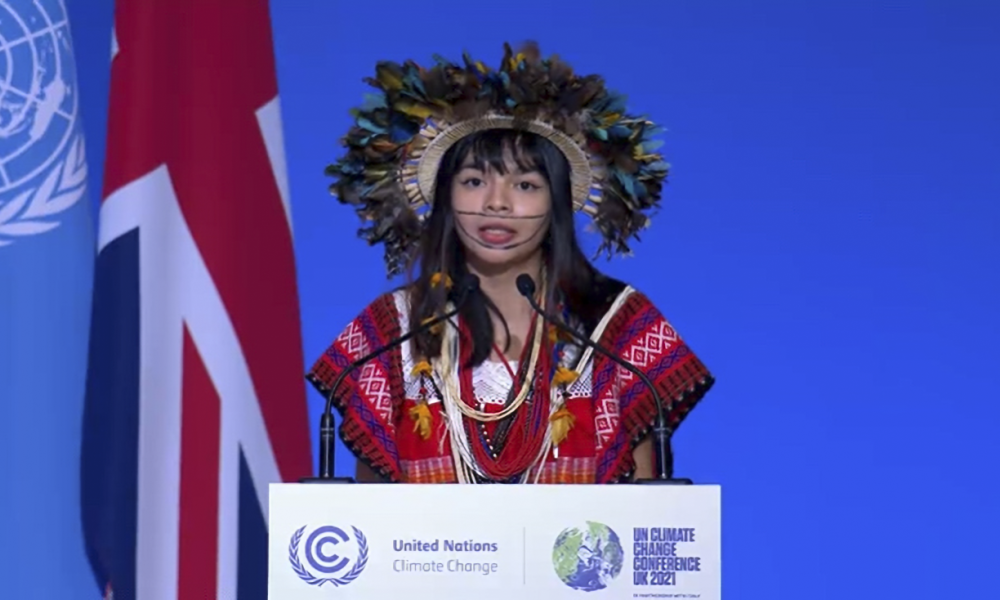
A second negative experience for some Indigenous groups at COP26 was the presence of pushback and, sometimes, threats against speakers. Txai Suruí (Paiter Suruí) received public criticism from Brazil’s President Jair Bolsonaro in addition to death threats after her speech. In response to these threats, she stated “I think I said correct words because they attack me.” The threats wielded at activists at COP26 are not isolated events. Outside the conference, demonstrations commemorated the 1,005 climate activists who had been killed since COP21 in Paris, one third of which were Indigenous. This exemplifies the dangers that Indigenous peoples face when combatting climate change and speaks to the fact that this kind of treatment of Indigenous peoples is not limited to what happens at large international gatherings like COPs.
The third technical challenge Indigenous peoples faced occurred at the meetings themselves. Understandably, COVID-19 capacity limits reduced the number of individuals who could attend sessions especially in indoor venues. However, Indigenous representatives reported being excluded from discussions due to overcrowded sessions. In one instance, Josh Kioke with the Union of British Columbia Indian Chiefs (UBCIC), said that despite being registered as an observer on the negotiation’s official speaker’s list, he “was asked to leave” the room because it had reached capacity. This could pose a serious issue for Indigenous peoples access to these discussions—especially those regarding Indigenous lands or concerns—that was promised by the conference. Although Indigenous peoples had gotten to the conference, to have their voices heard and to interact with attendees is a whole other challenge. Ruth Łchavaya K’isen Miller (Dena’ina Athabaskan) points out that fluency in UN working languages and familiarity with technology further complicate Indigenous participation once they get to such conferences, not necessarily limiting this critique to COP26 alone. She claims that there “has not been enough work to break down those barriers to entry” for Indigenous peoples.

From inclusion to leadership: Room for improvement in the international Indigenous rights regime
The latter of these challenges speaks to a pertinent issue in the international Indigenous rights regime: that of Indigenous inclusion in decision-making on the international stage. This is an issue that goes beyond the singular event of COP26 and even the structure of UNFCCC meetings. It is a challenge that Indigenous peoples have voiced concern at in previous COPs and even in different organs of the UN.
This also brings me into why I became interested in researching the rights of Indigenous peoples on the international stage. During my undergraduate degree, I took a class on Indigenous peoples and extractive industries taught by one of the few Indigenous professors at my university. I learned, from my professor and my Indigenous classmates, the ways in which Indigenous peoples have had to approach the international stage to have their problems—like treaty violations and land rights—addressed. This can be difficult because Indigenous peoples are not traditional nation-state actors and may even face oppressive policies from the states in which they reside, states with which they sometimes need to go through to access the international arena.
As peoples with varying status of treatment, let alone status of “nationhood”, within countries around the world, incorporating Indigenous peoples into the international governance regime has yet to be achieved. The history of the international Indigenous rights regime only began in the latter half of the twentieth century with the UN Declaration on the Rights of Indigenous Peoples (UNDRIP), the core document for the Indigenous rights regime, only being ratified in 2007. UNDRIP and other conventions–including the ILO’s Convention Concerning Indigenous and Tribal Peoples in Independent Countries (ILO Convention 169)–are not legally binding, and therefore serve a more normative and customary function, guiding states to uphold in their own policies. This does not go to say that agreements like UNDRIP or ILO Convention 169 have no weight or power; just in the past month, these agreements have been called upon to support Indigenous rights and concerns in Ecuador, Guatemala and Sweden.
Indigenous peoples’ participation with an organization like the United Nations—an organization whose members are primarily states—is not straightforward. At COP21 in Paris, Chief Bill Erasmus (Dene Nation) voiced his frustration, “We have our own land, our own language. Why are we not in that room [,]” the room in which decisions are made. This demonstrates one of the key problems, the identity and status of Indigenous peoples in relation to the traditional nation-states that created many of these international institutions.
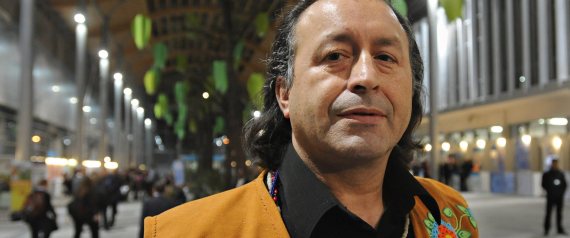
As non-traditional state actors, Indigenous peoples participation at the international level is hindered by two factors. The first being state opposition and hesitancy—especially amongst predominant settler-states such as the United States, Canada, New Zealand, and Australia who all originally opposed UNDRIP—due to their own histories or established relationships with Indigenous groups within their borders. This challenge is explored in-depth in Dominic O’Sullivan’s new book which describes the original opposition to UNDRIP by the states listed above, citing their concerns over national sovereignty and liberal ideologies. A specific example of trying to support Indigenous peoples participation in decision-making processes can be seen in one of the UN organs that engages Indigenous peoples more frequently, the World Intellectual Property Organizations (WIPO) and its Intergovernmental Committee on Intellectual Property and Genetic Resources, Traditional Knowledge and Folklore (IGC), which is what I’ve primarily studied in the past. For instance, one of the policies they changed in their meetings is to allow Indigenous peoples to speak when they want rather than waiting for state delegates to speak first while following existing IGC procedures.
The second complicating factor is the different world-views and cosmologies that Indigenous peoples have which don’t always fit seamlessly into the predominantly Western institutions that comprise global governance. Out of the scope for this blog post, work on the protection of Indigenous knowledge at WIPO and Indigenous knowledge systems explain these challenges well. Additionally, some of the panels at COP26 did an excellent job at exploring the differences between these world-views and perhaps the ways in which they can work together.
This brings us back to Indigenous participation at COP26 and the critique that Indigenous peoples, although included at the conference in numbers never seen before, were not granted positions of power to help make decisions. As Jade Bagey, campaign director for NDN Collective, pointed out “[n]one of the official negotiating nations are tribal nations,” arguing that it’s “a failure of the UN recognizing Indigenous peoples’ rights.”
These are rights that should be upheld under UNDRIP; Article 18 guarantees the right for Indigenous peoples “to participate in decision-making matters which would affect their rights” in addition to the right “to maintain and develop their own [I]ndigenous decision-making institutions.” Article 14 calls on UN organs and special agencies to ensure Indigenous inclusion, especially “on issues affecting them” which is what a lot of Indigenous peoples voiced concern over at COP26 with the lack of decision-making power on aspects of the agreement, most notably Article 6 and the deforestation pledge. Yes, Indigenous peoples were included, but were they really considered key decision-makers at COP26? According to Eileen Mariena Cunningham, representative for the International Indigenous Peoples Forum on Climate Change (IIPFCC), “[t]here’s not a clear guide on how our participation will become more active and effective,” at COPs. As Kate Robertson moderated a panel at COP26, she claimed to have not seen much improvement in this area since she first began attending COPs in 2009. When we don’t have plans on how to better incorporate Indigenous peoples into the decision-making process of policies that directly affect their territory, we risk stopping at a point where their inclusion is merely a tokenization. Chief Judy Wilson (Neskonlith Indian Band) attended COP26 and thought “[i]t’s good that we show our dances and our prayers, but we’re not just somebody to look at,” and emphasized that “if you’re not hearing our voices, and we’re not at the table—and we’re not—if you’re not listening to us, then that’s just for show.”
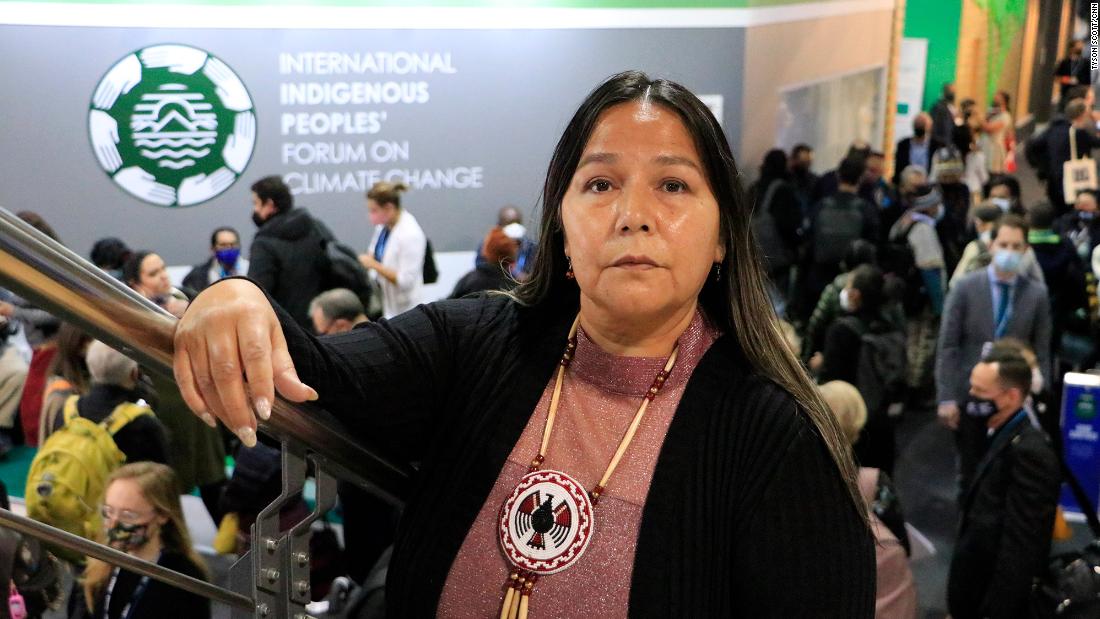
One of the promising exceptions to COP26’s Indigenous engagement may be Fawn Sharp (Quinault Indian Tribe) who became the first Indigenous person to “receive diplomatic recognition” for a U.S. delegation. In an interview about her position, Sharp discussed her conversations with U.S. Special Presidential Envoy for Climate, John Kerry whom with she traveled to Glasgow.
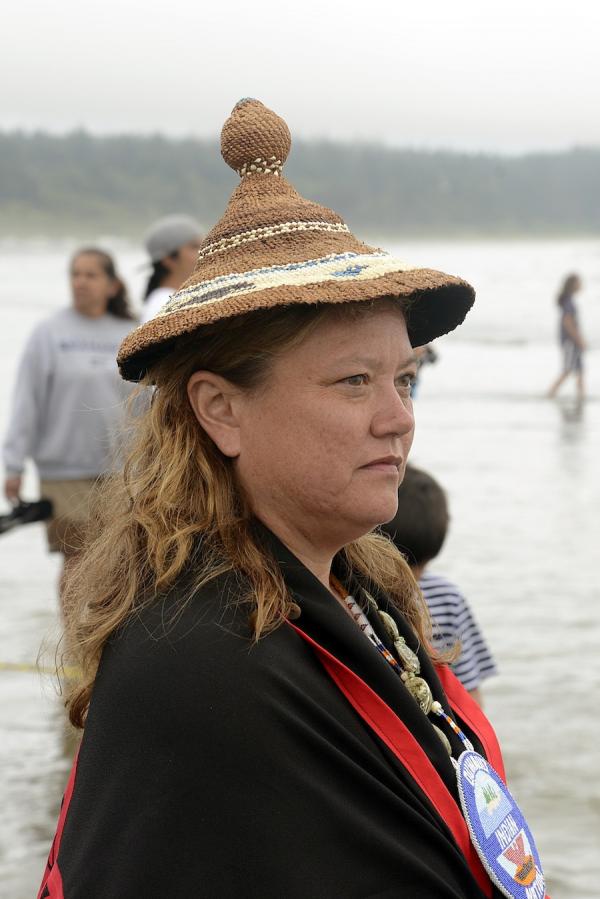
Sharp, who is also president of the National Congress of American Indians (NCAI), recounted Kerry’s visit to the NCAI where he acknowledged the importance of including Indigenous peoples not only in the conversation about climate, but ensuring they are “also at the table” where decisions are made.
Concluding remarks
Overall, there is still room for improvement. Chief Bill Erasmus’ words quoted above show that this is also not just an experience with the unique circumstances at COP26, this is something that has been of concern long before 2021. It is also something that the UN is beginning to address directly. During the summer of 2021, the 14th session of the Expert Mechanism on the Rights of Indigenous Peoples (EMRIP) invited representatives from around the world, virtually, to Geneva. The opening address highlighted Indigenous participation as a primary concern for international organizations that engage with them. During the session, the Human Rights Council hosted a roundtable (you can learn more about the session here) which included a mix of Indigenous and state representatives to participate in a dialogue on the ways in which we can better address the concern of Indigenous participation at the international level. While researching the EMRIP, I found out that one of the former representatives for the United States was a professor at my undergraduate university and still teaches at a university in my home state. I hope to get in touch with her and potentially establish some contacts in the field of international Indigenous rights regimes at the Geneva campus particularly in regards to human rights—of which EMRIP is related to—and WIPO (I have studied Indigenous people at WIPO and hope to continue researching this; it is also an area in which the representative I mentioned is involved in with their work in Indigenous and tribal law, especially intellectual property law).
UNFCCC COPs have a unique opportunity when it comes to promoting the rights of Indigenous peoples. Since Lima and Paris, Indigenous people have become increasingly highlighted in the arena of tackling climate change as important actors and knowledge holders. However, as this blog has explored, this inclusion has not been entirely successful in truly empowering Indigenous communities and bringing about drastic changes. There have been improvements. Increased awareness and representation explored above have come a long way since the establishment of the United Nations. Besides connecting with policymakers and researchers who work with EMRIP, I would like to hear their thoughts on an area in my research I found interesting: the prospect of co-management projects. Some of the ideal benefits of such projects include sharing of knowledge and Indigenous insights—similar to the benefits discussed in this COP26 panel—alongside, hopefully, building systems of relationships and trust when done through proper consultation. Such projects have already occurred at a small scale in Husila, Alaska or the Waikato River Settlement Act in New Zealand. Being weary of the potential risks and necessary precautions, I am curious about seeing if similar structures could be inspiration for future engagement of Indigenous peoples in international organizations.